Which ‘Hints’ Of New Physics Should We Be Paying Attention To?
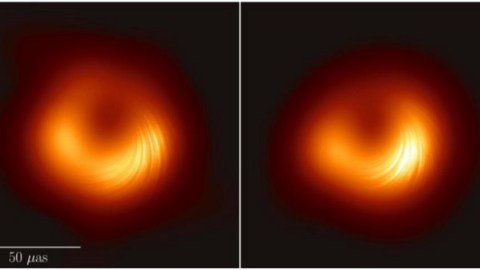
And which ones are probably examples where we’ve fooled ourselves?
Every once in a while — multiple times per year — a new research finding fails to line up with our theoretical expectations. In the fields of physics and astronomy, the laws of nature are known to such incredible precision that anything that fails to align with our predictions isn’t just interesting, it’s a potential revolution. On the particle physics side of the equation, we have the laws of the Standard Model governed by quantum field theory; on the astrophysics side, we have the laws of gravity governed by General Relativity.
And yet, from all of our observations and experiments, we occasionally get results that conflict with the combination of those two remarkably successful theories. Either:
- there’s an error with the experiments or observations,
- there’s an error with the predictions,
- there’s a new effect we haven’t anticipated within the Standard Model or General Relativity,
- or there’s new physics involved.
While it’s tempting to leap to the final possibility, it should be the scientists final resort, as the resiliency and successes of our leading theories has shown they’re not so easy to overturn. Here’s a look at eight potential hints of new physics that have come along with a great deal of hype, but deserve tremendous skepticism.
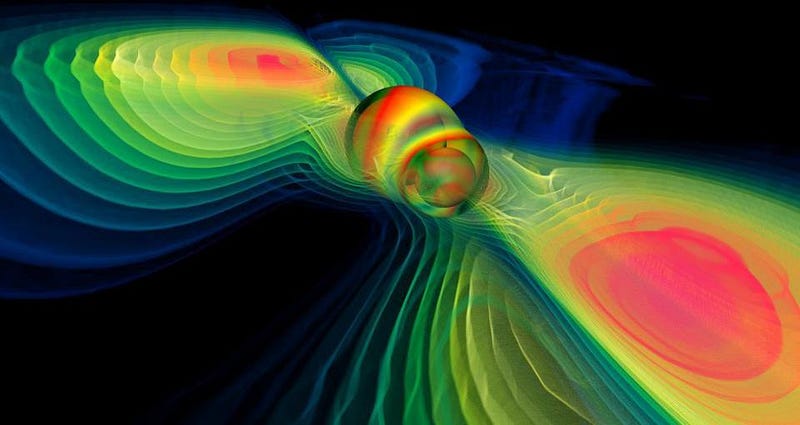
1.) Do gamma-ray bursts accompany black hole mergers? On September 14, 2015, the very first gravitational wave signal ever directly detected by humans arrived in the twin LIGO detectors. Indicating a merger of two black holes, one of 36 and one of 29 solar masses, they converted about three solar masses of energy into gravitational radiation. And then, unexpectedly, just 0.4 seconds later, a very small signal arrived in the Fermi GBM instrument: a potential indication of an accompanying electromagnetic signal.
But with more than 50 additional black hole-black hole mergers, including some that were more massive, no other gamma-ray bursts were seen. The ESA’s Integral satellite, operational at the same time, saw nothing. And these low-magnitude transient events occur in the Fermi GBM data about once or twice per day. The odds of a false positive? 1-in-454, approximately. While researchers are still considering how gamma-ray bursts could accompany black hole-black hole mergers, the evidence that they occur is generally considered flimsy.
Verdict: Probably not, but perhaps rarely.
Most likely explanation: Observational coincidence, or a statistical fluctuation.
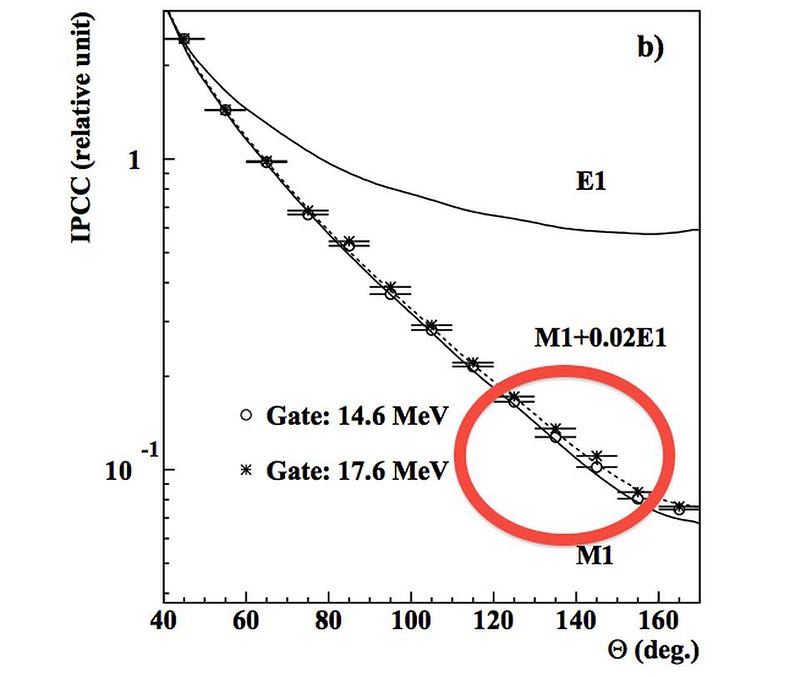
2.) Is there a new, low-energy particle called the X17? Just a few years ago, a Hungarian research team reported the possible detection of a new particle: dubbed the X17. When you make an unstable nucleus like Beryllium-8, an important intermediate step in the nuclear fusion process of red giant stars, it has to emit a high-energy photon before decaying back to two Helium-4 nuclei. Occasionally, that photon will spontaneously produce an electron-positron pair, and there will be a particular energy-dependent angle between the electron and the positron.
When they measured the rate of which angles occurred, however, they found a departure from what the Standard Model predicted at large angles. A new particle and a new force were initially proposed as the explanation, but many are doubtful. The direct detection exclusion limits already rule such a particle out, the calibration methods used are dubious, and this is already the fourth claimed “new particle” by this team, with the first three having already been ruled out earlier.
Verdict: Doubtful.
Most likely explanation: Experimental error by the team performing the experiments.
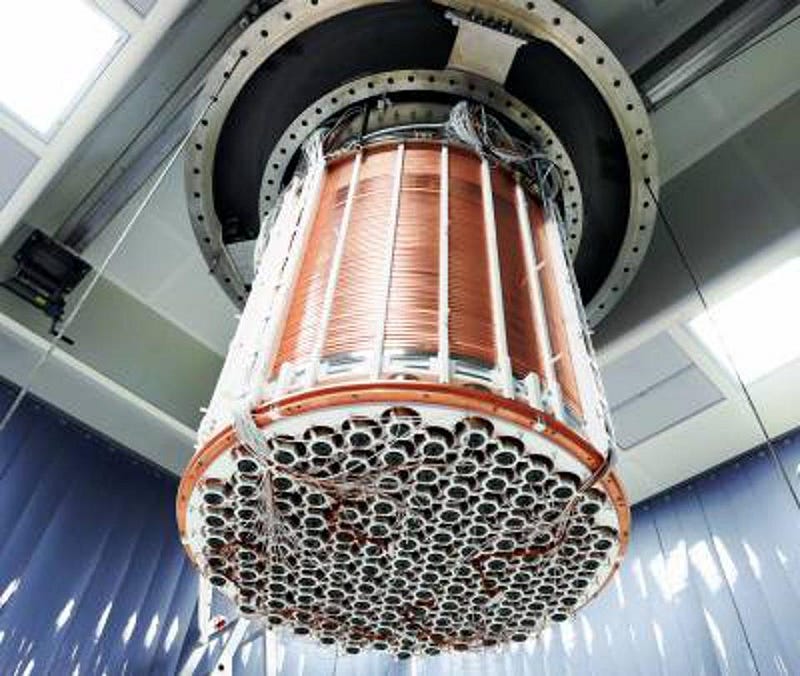
3.) Is the XENON experiment finally detecting dark matter? After decades of gradually improving the limits on the cross-section of dark matter with protons and neutrons, the XENON detector — the world’s most sensitive dark matter experiment to date — detected a minuscule but hitherto unexplained signal in 2020. There were definitely a small but significant number of events that were detected above and beyond the expected Standard Model background.
Immediately, fantastic explanations were considered. The neutrino could have a magnetic moment, explaining these events. The Sun could be producing a novel type of (candidate dark matter) particle known as an axion. Or, perhaps in a mundane disappointment, it could have been a tiny amount of tritium in the water, an isotope which has not yet been accounted for, but where the presence of just a few hundred atoms could account for the difference. Astrophysical constraints already disfavor the neutrino and axion hypotheses, but no definitive conclusion as to this signal excess’s nature have yet been reached.
Verdict: Doubtful; probably tritium.
Most likely explanation: New effect from an unaccounted-for background.
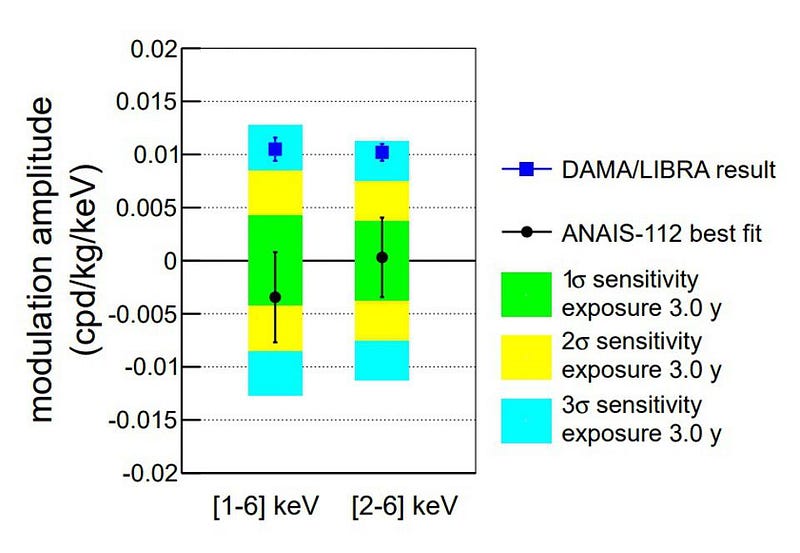
4.) Is the DAMA/LIBRA experiment seeing dark matter? We often say that “extraordinary claims require extraordinary evidence,” because basing a revolutionary conclusion on only flimsy evidence is a recipe for scientific disaster. For many years now — well over a decade — the DAMA/LIBRA collaboration has seen an annual pattern in its signal: more events at one time of year, fewer at another, in a cyclical pattern. Despite no other detectors seeing anything of the sort, they have long claimed that this is evidence for dark matter.
But so much about this experiment has been questionable. They’ve never disclosed their raw data or their data pipeline, so their analysis cannot be checked. They perform a dubious annual recalibration at the same time every year, which could cause poorly-analyzed noise to be mistaken for a signal. And, with the first independent replication tests now having occurred, they refute DAMA/LIBRA’s results, as do complementary direct detection efforts. Although the team associated with the experiment (and a few theorists who are speculating wildly) claim dark matter, practically no one else is convinced.
Verdict: No, and this is likely a dishonest, rather than an honest, mistake.
Most likely explanation: Experimental error, as shown by a failed reproduction attempt.
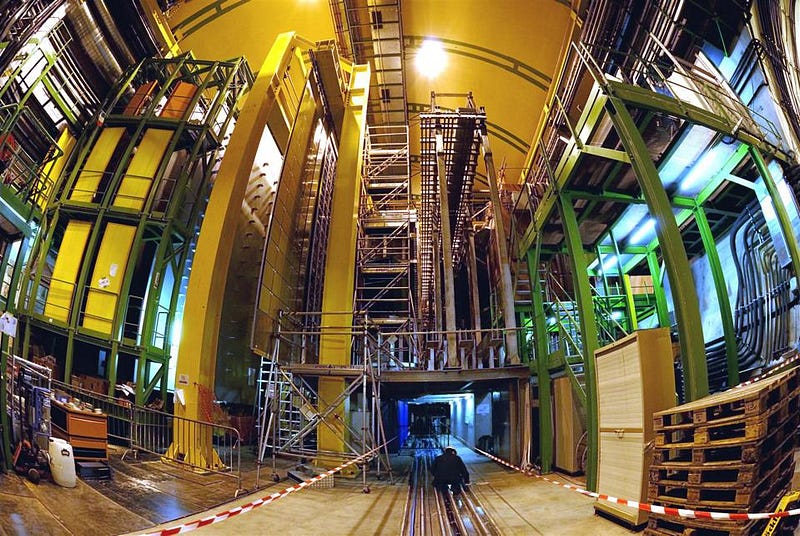
5.) Has the LHCb collaboration broken the Standard Model? The Large Hadron Collider at CERN is famous for two things: colliding the highest-energy particles ever in a laboratory on Earth, and discovering the Higgs boson. Yes, its primary goal is to discover new, fundamental particles. But one of the serendipitous things that comes along with its setup is the ability to create large numbers of unstable, exotic particles, like mesons and baryons that contain bottom (b)-quarks. The LHCb detector, where the “b” stands for that particular quark, produces and detects more of these particles than any other experiment in the world.
Remarkably, when these particles decay, the version that contain b-quarks and the version that contain b-antiquarks have different properties: evidence for a fundamental matter-antimatter asymmetry known as CP-violation. In particular, there’s more CP-violation seen than (we believe) the Standard Model predicts, although there are still uncertainties. Some of these “anomalies” exceed the 5-sigma threshold, and could point towards new physics. This could be important, because CP-violation is one of the key parameters in explaining why our Universe is made of matter, and not antimatter.
Verdict: Uncertain, but is likely a measurement of new parameters associated CP-violation.
Most likely explanation: New effect within the Standard Model, but new physics remains a possibility.
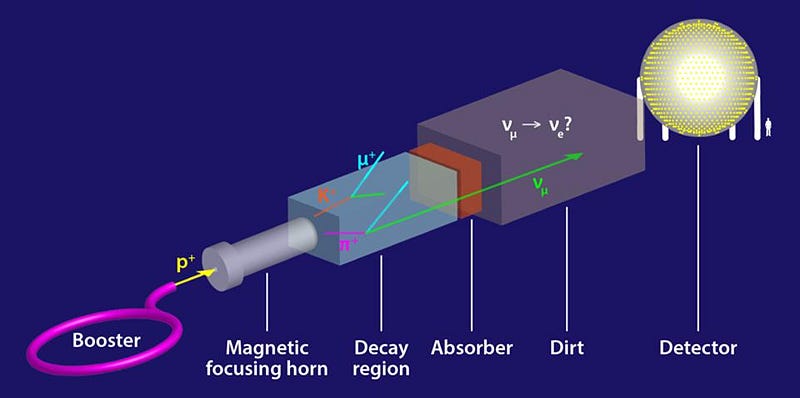
6.) Is there an ‘extra’ type of neutrino present? According to the Standard Model, there should be three species of neutrino in the Universe: electron, muon, and tau neutrinos. Although they were initially expected to be massless, they were shown to oscillate from one form into another, which is only possible if they’re massive. Similar to how the light quarks mix together, the neutrinos do as well, and measurements of atmospheric neutrinos (produced from cosmic rays) and solar neutrinos (from the Sun) have shown us what the mass differences between these neutrinos are. With only the mass differences, however, we don’t know the absolute masses, nor which neutrino species are heavier or lighter.
But neutrinos from accelerators, as shown from the LSND and MiniBooNE experiments, don’t fit with the other measurements. Do they indicate a fourth type of neutrino, despite the decay of the Z-boson and constraints from Big Bang Nucleosynthesis showing only three, definitively? Could that neutrino be sterile and non-interacting, except for these oscillatory effects? And when the decisive data, either confirming or refuting these results come in (from MicroBooNE, ICARUS, and SBND), will they continue to show evidence for a fourth neutrino, or will things slide back into line with the Standard Model?
Verdict: Unlikely, but new experiments will either confirm or rule out such indications.
Most likely explanation: Experimental error is the safe bet, but new physics remains possible.

7.) Does the Muon g-2 experiment break the Standard Model? This one is both highly contentious and also brand new. Years ago, physicists attempted to measure the magnetic moment of the muon to incredible precision, and got a value. As theory raced to catch up, they calculated (and, where calculations were impossible, inferred based on other experimental data) what that value ought to be. A tension emerged, and Fermilab’s Muon g-2 experiment returned their first major results, showing a strong discrepancy between theory and experiment. As always, “new physics” and a broken Standard Model were all over the headlines.
The experiment was sound, their errors were well-quantified, and the discrepancy appears to be real. But this time, it appears that the theory might be the problem. Without the ability to calculate the expected value, the theory team relied on indirect data from other experiments. Meanwhile, a different theoretical technique has recently emerged, and their calculations match the experimental values (within the errors), not the mainstream theory calculation. Better experimental data is coming, but the theoretical discrepancy is rightfully at the center of this latest controversy.
Verdict: Undecided; the biggest uncertainties are theoretical and must be resolved independent of experiment.
Most likely explanation: Error with the theoretical calculations, but new physics remains a possibility.
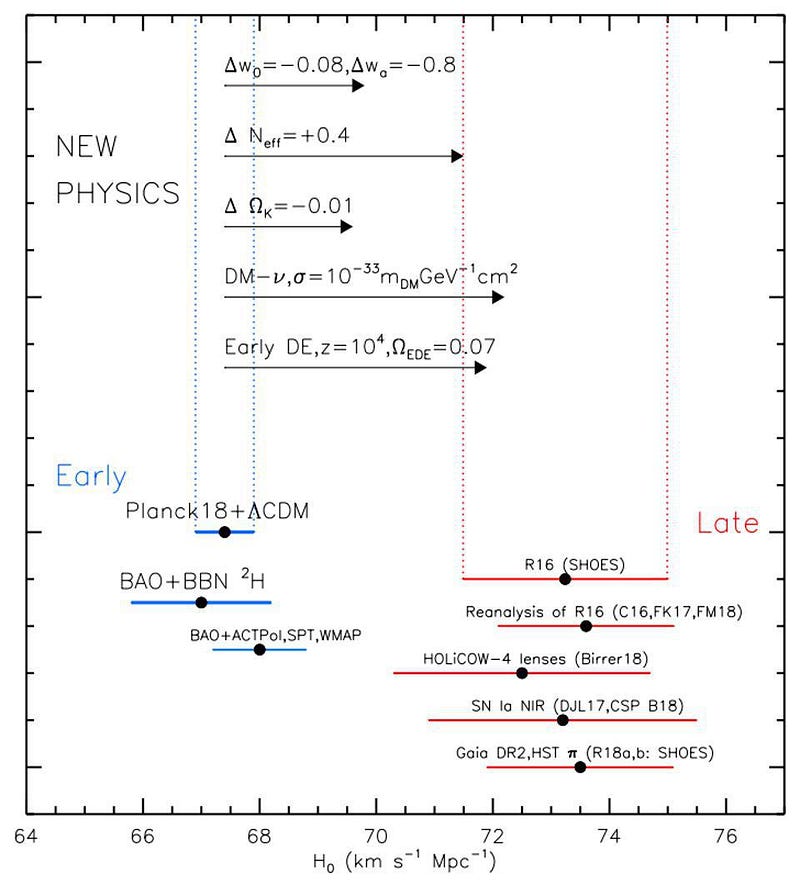
8.) Do the two different measurements for the expanding Universe show the way to new physics? If you want to know how fast the Universe is expanding, there are two general ways to go about measuring it. One is to measure objects close by and determine how far away they are, then find those objects more distantly along with other observational indicators, then find those other indicators farther out along with rare but bright events, and so on, out to the edges of the Universe. The other is to start at the Big Bang and find an early, imprinted signal, and then measure how that signal evolves as the Universe evolves.
These two methods are sound, robust, and have many ways to measure them. The problem is that each method gives an answer that disagrees with the other. The first method, in units of km/s/Mpc, gives 74 (with an uncertainty of just 2%), while the second gives 67 (with an uncertainty of just 1%). We know it’s not a calibration error, and we know it’s not a measurement inaccuracy. Is it a clue of new physics, and if so, what’s the culprit? Or is there some sort of unidentified error that, once we figure it out, will cause everything to fall back into line?
Verdict: The different measurements of the two general techniques are difficult to reconcile, but more study is needed.
Most likely explanation: Unknown, which is exciting for new physics possibilities.
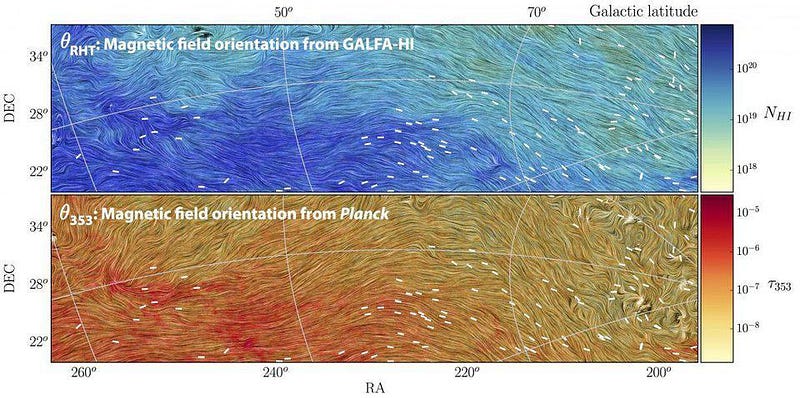
We must always remember just how much established data, evidence, and agreement between measurement and theory there is before we can ever hope to revolutionize our scientific understanding of how things work in the Universe. It isn’t just the results from any new study that need to be examined, but rather the full suite of evidence at hand. A single observation or measurement must be taken as just one component of all the data that’s been gathered; we must reckon with the cumulative set of information that we have, not just the one anomalous finding.
Nevertheless, science is, by its nature, an inherently experimental endeavor. If we find something that our theories cannot explain, and that finding is robustly replicated and significant enough, we must look to a potential fault with the theory. If we’re both good and lucky, one of these experimental results may point the way towards a new understanding that supersedes, or even revolutionizes, the way we make sense of our reality. Right now, we have many indications — some very compelling, others less so — that a paradigm-shifting discovery may be within our grasp. These anomalies may, in fact, turn out to be harbingers of a scientific revolution. But more often than not, these anomalies turn out to be errors, miscalculations, miscalibrations, or oversights.
Will any of our current “hints” turn out to be something more? Only time, and more inquiry into the nature of reality itself, will ever be able to reveal a closer approximation of the Universe’s ultimate truths.
Starts With A Bang is written by Ethan Siegel, Ph.D., author of Beyond The Galaxy, and Treknology: The Science of Star Trek from Tricorders to Warp Drive.





